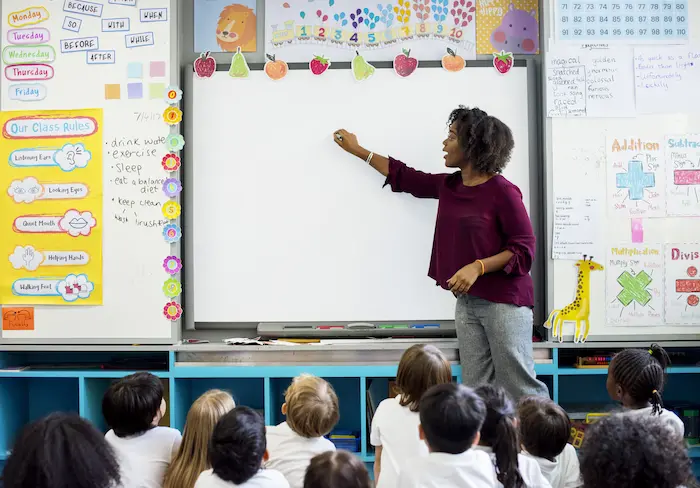In his most recent op-ed, “Denial is the Heartbeat of America”, Ibram X. Kendi discusses how white Americans, for many generations, have turned a blind eye to the blatant racism that has harmed the lives of Black, Indigenous, and Latinx people in this country. Thus, the acknowledgement of racism and white supremacy is a mandatory prerequisite for all educators to engage in anti-racist work. Furthermore, proactive and continuous capacity building should be the foundation for any anti-racist educator.
Although Ibram X. Kendi’s How to be an Antiracist and Robin DiAngelo’s White Fragility are considered the premier books of the antiracist movement, it’s important to point out that reading those books alone will not make you an “expert” in antiracism. As a matter of fact, taking that stance serves as an insult to all the scholars who have dedicated their lives to this work well before the term “antiracism” became a commercialized trend or a co-opted hashtag on social media. Dr. Greg Carr, chair of Howard University’s Africana Studies department, articulates this perfectly in the introduction of Dr. Jared Bell’s book, “I Mix What I Like”:
“If they are considered the most ‘compelling,’ the most ‘brilliant,’ what you see then is someone that does not help us. It is the invisible. It is the ones that we know. The ones that do not receive grants, the ones that are not lauded or called ‘superheroes’ in each other’s books. Or worse still the ones who are not considered the best by White scholars who stand over our archives like vultures keeping our history hostage and asking as the price of admission that you trade your soul for access to the things that your Ancestors inscribed. Those people that write on the backs of books that ‘this is the finest new scholar,’ that is the person that you should never quote. Rather, buy all their books. Read them for the sources. Get the sources yourself because what they have contributed is not a frame for interpreting but rather they have just given you a roadmap to the things that you need to reclaim.”
Using Dr. Carr’s language, Kendi and DiAngelo are the current “superheroes” of antiracism. Although their books are excellent starting points for people who need an introduction to racism in America, our learning cannot stop there! The racially-charged climate we’re currently in calls for us to push our learning further. Therefore, if you own a copy of those books, please refer to the Notes section in the back. Take note of the scholars they referenced. Make it a point to purchase those books and read them.
So you’ve read all these books…now what?! You must now use this knowledge to take action in your school communities. Here’s how you do it:
- Evaluate your own behavior – Since we are all prejudiced and biased by human nature, it is important for us to conduct a personal audit of our feelings and behaviors around the issue of race. This involves questioning our biases, examining stereotypical beliefs, and challenging our own ideologies around racial and cultural identity. To help with this task, Harvard University launched Project Implicit, which offers implicit association tests (IAT) that you can take to assess your own behavior around race.
- Study & teach the RIGHT history – Everyone should be aware of the whitewashing of American history that exists in our academic curricula. Even if a textbook has an element of truth, it doesn’t tell the whole story about the historical experiences of Black, Indigenous, and Latinx people. As teachers, we must assess the accuracy and validity of historical information sources pertaining to Black, Indigenous, and Latinx people. The Sadker Foundation’s 7 Forms of Instructional Bias Guide is an excellent tool to use for this task. Additionally, we can supplement our instruction with other curricular resources that will fill the information gaps that exist in our textbooks. Here are a few recommended resources to check out:
Websites
- Rethinking Schools
- The Zinn Education Project
- Native Knowledge 360
- The 1619 Project
- Decenter the Teacher
Books
- “Cultivating Genius” by Dr. Gholdy Muhammad
- “An Indigenous Peoples’ History of the United States for Young People” by Roxanne Dunbar Ortiz
- “Reading, Writing & Racism” by Dr. Bree Picower
- “Stamped: Racism, Antiracism, and YOU” by Jason Reynolds & Ibram Kendi
Having restorative conversations about race
- Our schools need to function as racial healing spaces for your Black, Indigenous, and Latinx students. This is where restorative conversations come in. By creating a space where students can openly express themselves, be vulnerable and have their personal experiences with racism affirmed, we are modeling how to lead and learn with empathy.
In the end, our schools will not thrive if we don’t make a conscious effort to center the lived experiences of our Black, Indigenous, and Latinx students in and out of the classroom.







